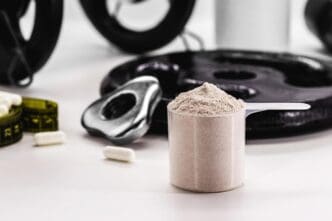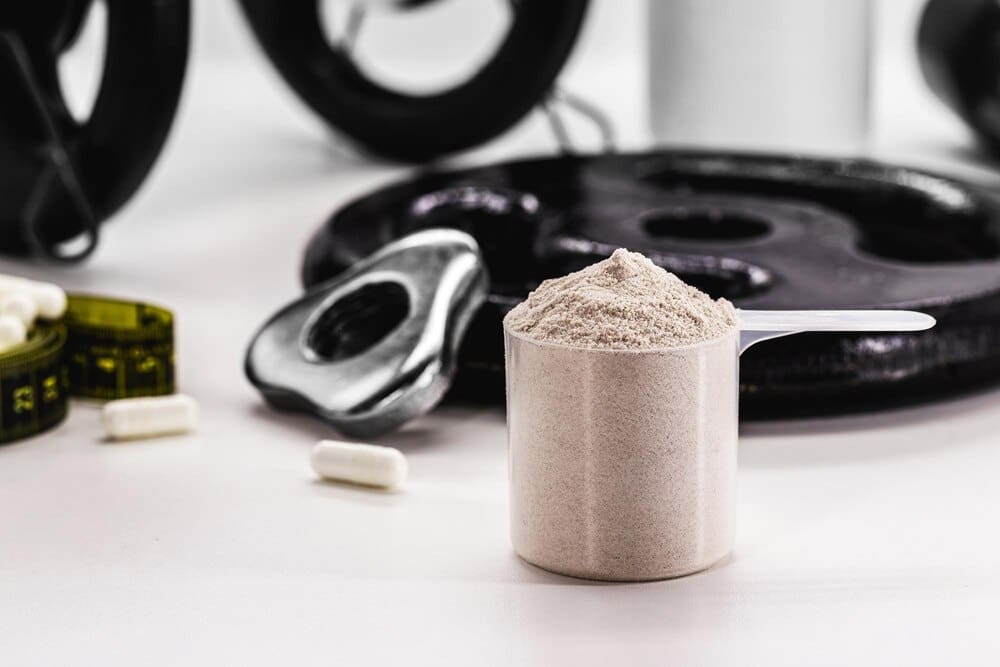For anyone engaged in a consistent resistance training program, the most effective, science-backed supplements for accelerating muscle growth are creatine monohydrate, protein powders, beta-alanine, and citrulline malate. These supplements work synergistically with proper training and nutrition by providing the essential building blocks for muscle repair, increasing the capacity to perform more work during exercise, and improving blood flow to deliver nutrients where they are needed most. While they are a powerful tool for enhancing results, it is critical to understand that they are intended to supplement, not replace, the foundational pillars of a caloric surplus, adequate protein intake from whole foods, and a well-structured workout routine.
The Foundation: Why Diet and Training Always Come First
Before spending a single dollar on supplements, it’s crucial to audit your non-negotiable foundations: training and nutrition. Supplements are accelerators, not creators, of muscle growth. They can amplify the effects of a good program, but they cannot compensate for a poor one.
The primary driver of muscle hypertrophy—the scientific term for muscle growth—is progressive overload. This principle dictates that you must continually challenge your muscles by increasing the demand placed upon them. This can mean lifting heavier weights, performing more repetitions or sets, or reducing rest times over weeks and months.
Equally important is your nutrition. To build new muscle tissue, your body requires a surplus of calories, meaning you must consume more energy than you expend. Furthermore, it needs an adequate supply of protein, the macronutrient that provides the amino acids necessary to repair and rebuild muscle fibers that are broken down during training. Aiming for 0.7 to 1.0 grams of protein per pound of body weight is a well-established target for active individuals.
The “A-List” Supplements: Proven Performers
Once your training and diet are dialed in, a select few supplements have stood the test of rigorous scientific scrutiny. These are the compounds that consistently demonstrate a tangible benefit for muscle growth and performance.
Creatine Monohydrate: The Gold Standard
If there is one supplement with the most extensive and robust body of evidence supporting its efficacy and safety, it is creatine monohydrate. It is a naturally occurring compound that your body produces and stores in muscle cells to help generate energy during high-intensity exercise, such as weightlifting and sprinting.
Creatine works primarily by increasing the availability of adenosine triphosphate (ATP), your body’s main energy currency. By supplementing with creatine, you saturate your muscles’ stores, allowing you to recycle ATP more efficiently. This translates directly to improved performance in the gym; you may find you can squeeze out one or two more repetitions on a heavy set or recover faster between sets. This increase in work capacity over time is a direct driver of muscle growth.
The standard, proven dosage is 3-5 grams of creatine monohydrate per day. While some protocols suggest a “loading phase” of 20 grams per day for a week to saturate muscles faster, it is not necessary; consistent daily intake of a smaller maintenance dose will achieve the same result within a few weeks. Myths about creatine causing kidney damage or dehydration have been thoroughly debunked in healthy individuals.
Protein Powders: The Building Blocks
While whole food should be your primary source of protein, powders offer a convenient, cost-effective, and efficient way to meet your daily protein targets. They are particularly useful around workouts when a whole-food meal might be impractical or too slow to digest.
There are several types of protein powders, each with unique characteristics:
- Whey Protein: A fast-digesting milk-derived protein, rich in all essential amino acids, especially leucine, which is a key trigger for muscle protein synthesis. It comes in several forms, including concentrate (good value), isolate (lower in lactose and fat), and hydrolysate (pre-digested for even faster absorption).
- Casein Protein: The other milk-derived protein, casein digests very slowly, forming a gel in the stomach. This provides a sustained release of amino acids, making it an excellent choice before bed or between meals.
- Plant-Based Proteins: For those who are vegan or lactose intolerant, options like pea, soy, and rice protein are excellent alternatives. Modern blends often combine multiple plant sources to ensure a complete amino acid profile comparable to whey.
The concept of a 30-minute post-workout “anabolic window” has been largely overstated. While consuming protein after training is beneficial, research shows that your total daily protein intake is far more important for muscle growth than precise timing.
Beta-Alanine: The Endurance Enhancer
Beta-alanine is a non-essential amino acid that, when ingested, combines with another amino acid, histidine, to form carnosine in your muscles. Carnosine is a potent buffer that helps neutralize the acid that accumulates during intense exercise—the “burn” you feel during a long, challenging set.
By increasing carnosine levels, beta-alanine allows you to delay the onset of muscular fatigue. This is most effective for efforts lasting between one and four minutes, which covers the typical set and rep ranges used in hypertrophy-focused training. Over time, this ability to perform more work before hitting failure can lead to greater muscle growth.
The effective dose is typically 3.2 to 6.4 grams per day, often split into smaller doses to mitigate a common, harmless side effect known as paresthesia—a tingling sensation on the skin. Like creatine, beta-alanine works through saturation, so consistent daily intake is key.
Citrulline Malate: The Pump and Performance Booster
Citrulline is an amino acid that plays a key role in the urea cycle, helping the body eliminate ammonia and other metabolic waste products. In the context of exercise, its primary benefit comes from its ability to increase the body’s production of nitric oxide (NO).
Nitric oxide is a vasodilator, meaning it relaxes and widens your blood vessels. This enhanced blood flow, often referred to as “the pump,” delivers more oxygen and nutrients to working muscles while also helping to clear out fatigue-inducing byproducts. Studies have shown that supplementing with citrulline malate can increase repetitions performed, reduce post-exercise muscle soreness, and improve recovery.
For performance benefits, look for a dose of 6-8 grams of citrulline malate (in a 2:1 ratio of citrulline to malate) taken about 30-60 minutes before a workout. It is a common and effective ingredient in many pre-workout formulas.
The “B-List”: Conditionally Useful Supplements
Beyond the core group, other supplements have some supporting evidence but may only be useful in specific contexts or for certain individuals. Their impact is generally less pronounced than the A-list supplements.
Branched-Chain Amino Acids (BCAAs)
BCAAs consist of three essential amino acids: leucine, isoleucine, and valine. While they are critical for muscle repair, their utility as a standalone supplement is highly debated. Any complete protein source, like whey protein or chicken breast, already contains a full spectrum of amino acids, including BCAAs. If your daily protein intake is adequate, supplementing with extra BCAAs is largely redundant and offers little to no additional benefit for muscle growth.
HMB (Beta-hydroxy beta-methylbutyrate)
HMB is a metabolite of the amino acid leucine and is thought to work by reducing muscle protein breakdown (anti-catabolism). While early research was promising, subsequent studies suggest its benefits are most pronounced in untrained individuals just beginning a program or in elderly populations at risk of muscle loss. For experienced lifters, the effects appear to be minimal.
Navigating the Market: How to Choose a Quality Supplement
The supplement industry is vast and, in many regions, poorly regulated. This makes it essential for consumers to be discerning. When selecting a product, prioritize safety and transparency.
Look for products that have undergone third-party testing from organizations like NSF Certified for Sport or Informed-Sport. These certifications verify that the product contains what the label claims it does and is free from banned substances and contaminants.
Be wary of “proprietary blends,” which hide the specific amounts of each ingredient. A reputable company will provide a transparent label that clearly lists the dose of every active component, allowing you to verify that it contains an effective, evidence-based amount.
Conclusion
Building a stronger, more muscular physique is a long-term journey rooted in consistent training and smart nutrition. Supplements are not magic pills, but when used correctly, they can be a powerful ally in that process. By focusing on the proven performers—creatine for strength, protein for building blocks, beta-alanine for endurance, and citrulline for blood flow—you can effectively support your body’s ability to adapt and grow. Always prioritize quality, verify dosages, and remember that the most important investments you can make are the effort you put in at the gym and the attention you pay to your plate.







